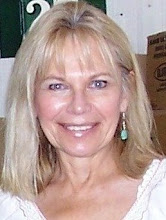Note: Within the old Lida powiat (district), there were also two small peasant villages named Zabłoć, one near Beniakonie and the other near Żołudek. In my translations, I am focusing on Lida district towns that were the seats of Roman Catholic parishes. The term folwark is often mentioned in connection with these towns; Wikipedia offers some background history and explanation of this type of farm settlement.
Town and folwark on the Dworczanka River, Lida district, in the 4th police precinct, Zabłoć gmina and rural precinct, at 49 wiorsts [approx. 49 km] from Lida. The town has 7 houses, 111 inhabitants (1 Orthodox, 106 Catholics, 4 Jews; in the year 1865, 26 “revision souls), gmina administration, a Catholic parish church, a school, a house of shelter for the poor. The folwark, alongside the town, has 11 Orthodox residents, 67 Catholics, and 4 Jews. The Catholic parish church, called Holy Trinity, the original one built of wood in 1622, remained but was rebuilt in 1778 due to its ruin; the present church, of brick, remained endowed in the year 1812 through Count Ludwik Tyszkiewicz. The Catholic parish, in the Radun deanery, has 4,368 faithful. Chapels in Zabłoć and in Woronicze.
In the parish, the area has hills, forests, pastures; gravelly soil. The Kotra and Przewoza flow [here]. In the composition of the rural district come the town Zabłoć, the villages Dziatki, Dzyboły, Gudziniszki, Jodzielewce, Koziany, Kupieje, Lelańce, Maluki, Mosiewce, Opanowce, Osipowce, Pirowszczyzna, Podziejki, Przewoza, Remzy, Sołtaniszki, Szławience, Tołoczki, and Wolejsze, as well as the szlachta neighborhoods Jodzielewce, Przełęskie and Zapaśniki. All in all, in the year 1865, 69 “revision souls” were treasury peasants, 18 were jednodworce, and 625 enfranchised peasants.
The gmina belongs to the 1st peace precinct of peasant affairs, falls within the 2nd rural precinct (Zabłoć and Lebioda), and includes 40 towns having 309 houses, 4,107 peasant inhabitants (in the year 1865, 1,359 “revision souls,” of them 103 were treasury peasants, 64 jednodworce, and 11 Jewish farmers), enfranchised for 6,691 desyatins [19,404 acres] (5,019 fields). Moreover, within the limits of the gmina are present 8,827 desyatins of land that belong to other classes (3,074 fields), 33 desyatins of church land (21 fields). The total of the gmina area consequently encompasses 15,551 desyatins (8,114 fields) and has 4,812 inhabitants.
(Słownik, v. XIV, p. 184)
Subscribe to:
Post Comments (Atom)










No comments:
Post a Comment